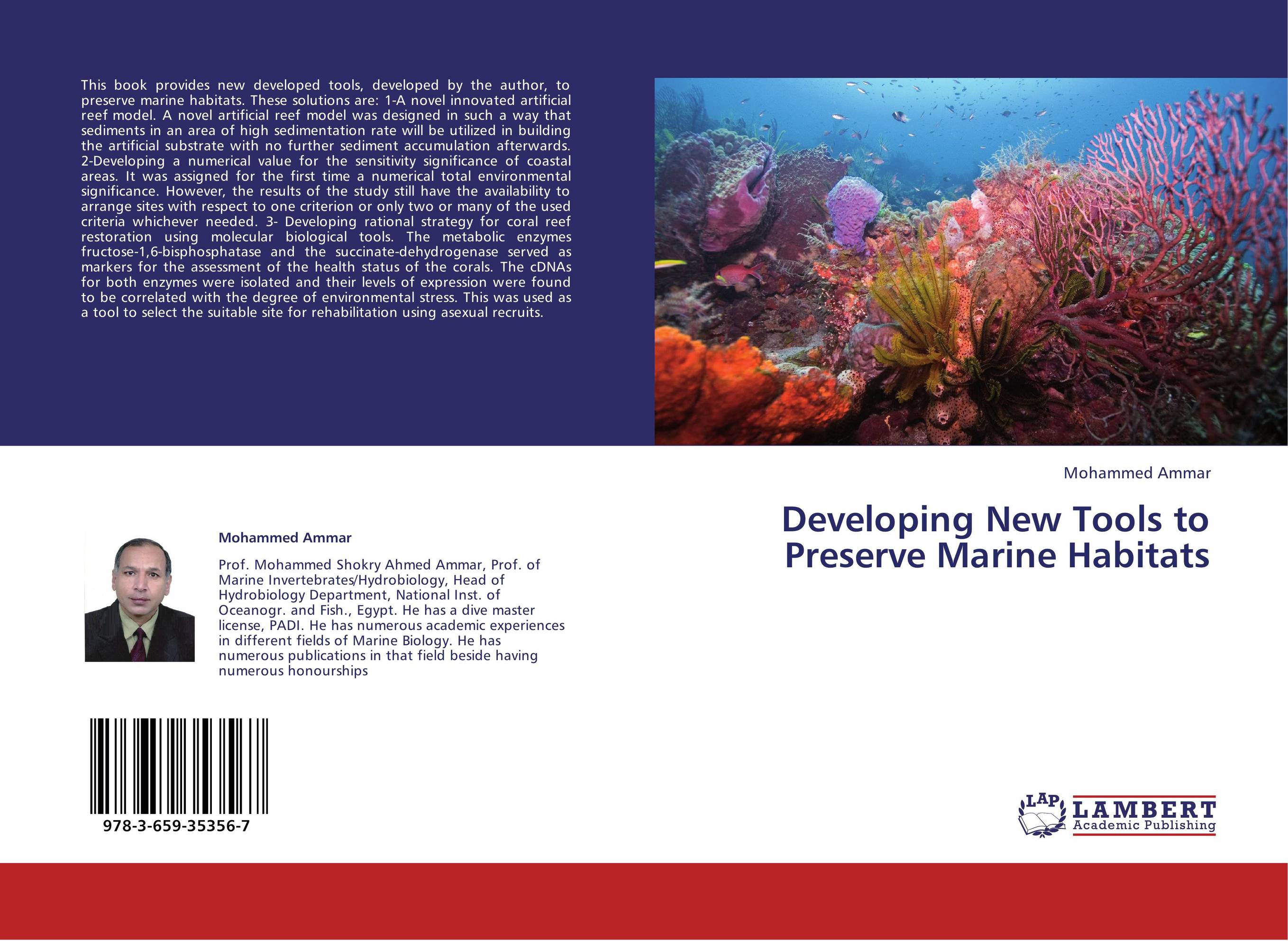| Поиск по каталогу |
|
(строгое соответствие)
|
- Профессиональная
- Научно-популярная
- Художественная
- Публицистика
- Детская
- Искусство
- Хобби, семья, дом
- Спорт
- Путеводители
- Блокноты, тетради, открытки
Developing New Tools to Preserve Marine Habitats.

В наличии
| Местонахождение: Алматы | Состояние экземпляра: новый |

Бумажная
версия
версия
Автор: Mohammed Ammar
ISBN: 9783659353567
Год издания: 2013
Формат книги: 60×90/16 (145×215 мм)
Количество страниц: 84
Издательство: LAP LAMBERT Academic Publishing
Цена: 30642 тг
Положить в корзину
| Способы доставки в город Алматы * комплектация (срок до отгрузки) не более 2 рабочих дней |
| Самовывоз из города Алматы (пункты самовывоза партнёра CDEK) |
| Курьерская доставка CDEK из города Москва |
| Доставка Почтой России из города Москва |
Аннотация: This book provides new developed tools, developed by the author, to preserve marine habitats. These solutions are: 1-A novel innovated artificial reef model. A novel artificial reef model was designed in such a way that sediments in an area of high sedimentation rate will be utilized in building the artificial substrate with no further sediment accumulation afterwards. 2-Developing a numerical value for the sensitivity significance of coastal areas. It was assigned for the first time a numerical total environmental significance. However, the results of the study still have the availability to arrange sites with respect to one criterion or only two or many of the used criteria whichever needed. 3- Developing rational strategy for coral reef restoration using molecular biological tools. The metabolic enzymes fructose-1,6-bisphosphatase and the succinate-dehydrogenase served as markers for the assessment of the health status of the corals. The cDNAs for both enzymes were isolated and their levels of expression were found to be correlated with the degree of environmental stress. This was used as a tool to select the suitable site for rehabilitation using asexual recruits.
Ключевые слова: coastal areas, Developing New Tools, Preserve Marine Habitats, Innovated Model, artificial reefs, Sensitivity Significance, Coral Reef Restoration, Molecular Biological Tools



